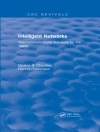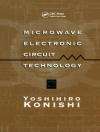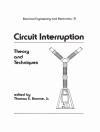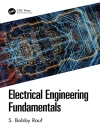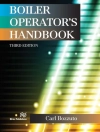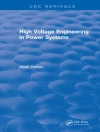Energy storage devices are considered to be an important field of interest for researchers worldwide. Batteries and supercapacitors are therefore extensively studied and progressively evolving. The book not only emphasizes the fundamental theories, electrochemical mechanism and its computational view point, but also discusses recent developments in electrode designing based on nanomaterials, separators, fabrication of advanced devices and their performances.
Inhoudsopgave
Preface xvii
Part 1: General Introduction to Battery and Supercapacitor, Fundamental Physics Characterization Techniques 1
1 Electrochemistry of Rechargeable Batteries Beyond Lithium-Based Systems 3
Brij Kishore, Shyama Prasad Mohanty and Munichandraiah Nookala
1.1 Lithium-Based Batteries 4
1.1.1 Lithium Primary Batteries 4
1.1.2 Lithium Metal-Based Secondary Batteries 5
1.1.3 Polymer Electrolyte-Based Lithium Batteries 5
1.1.4 Lithium-Ion Batteries 6
1.1.5 Advances in Li-Ion Batteries 8
1.1.6 Beyond Lithium-Based Systems 9
1.2 Cathodes for Na-Ion Batteries 9
1.2.1 Transition Metal Oxides 9
1.2.1.1 Single Metal Oxides 12
1.2.1.2 Multi-Metal Oxides 16
1.2.2 Polyanionic Compounds 17
1.2.3 Fluorides 21
1.2.4 Metal Hexacyanometalates 21
1.2.5 Organic Compounds 22
1.3 Anodes for Na-Ion Batteries 23
1.3.1 Carbon-Based Electrodes 23
1.3.2 Alloy Electrodes 25
1.3.3 Phosphorous, Phosphides, and Nitrides 26
1.3.4 Sulfides and Selenides 27
1.3.5 Phosphates 29
1.3.6 Organic Materials 29
1.3.7 Oxides 30
1.3.8 Sodium–Sulfur Batteries 33
1.3.9 Na-Air Batteries 35
1.4 Potassium Batteries 38
1.4.1 Potassium-Ion Batteries 39
1.4.1.1 Electrolytes 40
1.4.1.2 Cathode Materials 40
1.4.1.3 Anode Materials 41
1.4.2 Potassium–Sulfur Batteries 43
1.4.3 Potassium–Air Batteries 43
1.5 Mg-Based Rechargeable Batteries 44
1.6 Conclusions 49
References 50
2 Li-Ion Battery Materials: Understanding From Computational View-Point 67
Jishnu Bhattacharya
2.1 Cathode 67
2.1.1 Cluster Expansion 68
2.1.1.1 Li Ti2O4 70
2.1.1.2 Li Ti S2 73
2.1.1.3 Li Mn2O4 74
2.1.1.4 LixCo O2 77
2.1.1.5 Li(Ni0.5Mn0.5)O2 80
2.1.2 Phase Stability with Gas-Phase Evolution 80
2.1.3 Solid State Diffusion 84
2.1.3.1 Li Ti2O4 86
2.1.3.2 Li Ti2S4 87
2.1.3.3 Li Fe PO4 93
2.1.3.4 Li Co O2 94
2.1.3.5 Lithium Mobility in Layered Transition Metal Oxides 98
2.1.4 Prediction of New Materials and Combinatorial Chemistry 102
2.1.4.1 Phosphates 102
2.1.4.2 Metal Mixing in Olivines 107
2.2 Anode 113
2.2.1 Phase Transitions in Graphite 113
2.2.2 Fracture in Graphite 115
2.2.3 Diffusion in Graphene 118
2.2.4 Lithiation of Silicon Anodes 122
2.3 Electrolyte 125
2.3.1 Solid Electrolyte Interphase 126
2.3.2 Cathode Side Effects of Electrolyte 130
2.3.3 Solid State Electrolytes 131
2.3.3.1 LGPS Family 131
2.3.3.2 Diffusion in Solid Electrolytes – Case of LGPS 135
2.4 Conclusions 140
Acknowledgment 141
References 141
Part 2: Battery: Anode, Cathode and Non-Li-Ion Batteries 145
3 Nanostructured Anode Materials for Batteries (Lithium Ion, Ni-MH, Lead-Acid, and Thermal Batteries 147
Surendra K. Martha and Liju Elias
3.1 Introduction 148
3.2 Li-Ion Batteries 149
3.2.1 Electrochemistry of Lithium Ion Batteries 149
3.2.2 Compatibility of Electrode Materials with the Electrolyte 151
3.2.3 Anode Materials for LIBs 153
3.2.3.1 Lithium Metal 153
3.2.3.2 Intercalation/De-Intercalation Materials 156
3.2.3.3 Alloying/De-Alloying Materials 168
3.2.3.4 Conversion Type Anode Materials 176
3.3 Nickel Metal Hydride Batteries 180
3.3.1 Mechanism of Ni-MH Battery Operation 181
3.3.2 Anode Materials 183
3.3.2.1 Rare Earth-Based AB5 Alloys 184
3.3.2.2 Ti and Zr-Based AB2 Type Alloys 185
3.3.2.3 Mg Based Alloys 185
3.3.2.4 Rare Earth–Mg–Ni-Based Superlattice Alloys 186
3.3.2.5 Ti–V-Based Multicomponent Multiphase Alloys 187
3.4 Lead-Acid Batteries 187
3.4.1 Operating Principle 189
3.4.2 Negative Electrodes of Lead-Acid Batteries 190
3.4.2.1 Preparation of Negative Electrode 190
3.4.2.2 Sulfation 193
3.5 Thermal Batteries 201
3.5.1 Anode Materials for Thermal Batteries 203
3.5.1.1 Ca-Based Anodes 203
3.5.1.2 Mg and Al-Based Anodes 204
3.5.1.3 Li Anode 204
3.5.1.4 Li–Al Anodes 204
3.5.1.5 Li–Si Anode 205
References 207
4 Nanostructured Cathode Materials for Li-/Na-Ion Aqueous and Non-Aqueous Batteries 231
Farheen N. Sayed, Ganguli Babu and P. M. Ajayan
4.1 Introduction 232
4.1.1 Li+ vs. Na+ ion Batteries 234
4.1.2 Aqueous vs. Non-Aqueous Electrolyte 235
4.2 Background of Cathode Materials 238
4.3 Important Types of Cathode (Class) with Different Electrolytes 240
4.3.1 Li-ion based Nano Cathodes with Aqueous Electrolyte 240
4.3.2 Li-ion based Nano Cathodes with Non-Aqueous Electrolyte 244
4.3.3 Na+ ion based Nano Cathodes with Aqueous Electrolyte 248
4.3.4 Na+ ion based Nano Cathodes with Non-Aqueous Electrolyte 249
4.4 Methods to Prepare Nanostructured Cathodes 254
4.4.1 Solid-State Protocols 256
4.4.2 Sol–Gel Synthesis 257
4.4.3 Combustion Method 259
4.4.4 Hydrothermal Route 260
4.5 Future Aspects 262
References 263
5 Polymer-Assisted Chemical Solution Method to Metal Oxide Nanoparticles for Lithium-Ion Batteries 271
Di Huang and Hongmei Luo
5.1 Introduction 272
5.2 Carbon-Based Composites 273
5.3 Polymer-Assisted Chemical Solution Method 276
5.4 Oxygen Deficiency 284
5.5 Summary and Future Perspectives 284
References 286
6 Li–Air: Current Scenario and Its Future 291
Saravanan Karuppiah, Remith Pongilat and Kalaiselvi Nallathamby
6.1 Introduction: Why Lithium–Air Batteries? 291
6.2 General Characteristics 296
6.2.1 Types of Lithium–Air Batteries 297
6.3 Chemistry and Mechanism 299
6.3.1 Oxygen Reduction Reaction (ORR), Oxygen Evolution Reaction (OER), and the Catalysts 301
6.4 Critical Challenges 309
6.4.1 Electrolytes 310
6.4.2 Decomposition of Electrolyte During Discharge 310
6.4.3 Passivation and Blockage of Oxygen Diffusion 314
6.4.4 Large Polarization 314
6.4.5 Lithium Dendrite Formation 315
6.4.6 Electrocatalysis 316
6.4.7 Rate Capability 317
6.4.8 Energy and Power Density 317
6.4.9 Volume Changes 318
6.5 Non-Aqueous Li/Air Systems 318
6.5.1 Electrochemistry of Oxygen Reduction and Oxidation in Non-Aqueous System 318
6.5.2 Technical Challenges in NLAS 322
6.5.2.1 Designing of Air Cathode/Oxygen Transport 322
6.5.2.2 Effective Loading of Catalysts 323
6.5.2.3 Slow Kinetics of Oxygen Reactions/Deposition of Solid Insulating Products 323
6.5.2.4 Decomposition of Non-Aqueous Electrolytes/Effect of Possible Side Reactions 323
6.5.2.5 Lithium Dendrite Formation and Side Reactions of Li with H2O and Air 324
6.5.3 Electrocatalysts for NLAS 324
6.5.3.1 Carbon Based Materials 324
6.5.3.2 Metal and/or Metal Oxides 332
6.5.3.3 Composite Materials 336
6.5.3.4 Other Cathode Materials 338
6.5.4 Electrolytes Deployed in Non-Aqueous Li–Air Cells 339
6.5.4.1 Alkyl Carbonates 339
6.5.4.2 Esters 340
6.5.4.3 Ethers 340
6.5.4.4 Nitriles 340
6.5.4.5 Amides 341
6.5.4.6 DMSO 341
6.5.4.7 Sulfones 341
6.5.4.8 Ionic Liquids 342
6.5.5 Morphology of the Deposited Products 343
6.6 Aqueous Lithium–Air System 345
6.6.1 Approaches for the Formation of Water Stable Lithium Metal 346
6.6.1.1 Solid Electrolyte 346
6.6.1.2 Stability of Solid Electrolyte—Why Do We Need Buffer Layer? 350
6.6.1.3 Buffer Layer 351
6.6.2 Catholytes 355
6.6.2.1 Acidic Catholyte 355
6.6.2.2 Alkaline Catholyte 358
6.6.3 Catalysts for Acidic and Alkaline System 359
6.6.4 Managing the Precipitation of Li OH.H2O 359
6.6.5 Hybrid Lithium–Air Battery 363
6.7 Applications 364
6.8 Future of Lithium–Air Systems 365
References 367
7 Sodium-Ion Battery Anode Stabilization 377
Prasit Kumar Dutta, Arnab Ghosh and Sagar Mitra
7.1 Introduction 377
7.2 History of NIB 378
7.3 Operational Principle 381
7.4 Types of Storage Mechanisms 382
7.5 Issues and Challenges in a NIB 384
7.6 Brief Updates on Cathode and Anode Materials Research 386
7.6.1 Cathode Materials 387
7.6.1.1 Classification of Layered Structures 388
7.6.1.2 O3-Type Layered Na Fe O2 389
7.6.1.3 O3-, P3-, and P2-Type NaxCo O2 391
7.6.1.4 Sodium Vanadium Phosphate, Na3V2(PO4)3 392
7.6.1.5 Emerging Cathodes 392
7.6.2 Anode Materials 393
7.6.2.1 Carbon-Based Systems 394
7.6.2.2 Ti-Based Oxide Anodes 395
7.6.2.3 Alloy Anodes 396
7.6.3 Room-Temperature Sodium–Sulfur (RT Na–S) Battery 400
7.6.4 Electrolyte Modification 404
7.7 Problems in a NIB on Anode Stabilization 405
7.7.1 Problems with Conductive Additive 407
7.7.2 Cyclic Voltammetry Study with Conductive Additive 409
7.7.3 Ex Situ SEM Studies 410
7.7.4 Solving the Conductive Carbon and Electrolyte Interface 411
7.8 Few Solutions for Future 412
7.8.1 In Situ Raman Mapping 413
7.8.2 In Situ FTIR 415
7.8.3 In Situ Synchrotron XRD Coupled with DFT Analysis 416
7.8.4 SIMS-TOF 417
7.8.5 In Situ TEM Coupled with DFT Analysis 417
7.8.6 STEM-HAADF and EELS 419
7.8.7 Time-Lapse Tomography of Volume Expansion 420
7.9 Perception 421 References 422
8 Polymer-Based Separators for Lithium-Ion Batteries 429
J. C. Barbosa, C. M. Costa and S. Lanceros-Méndez
8.1 Introduction 429
8.2 Polymer Types and Characteristics 431
8.3 Separator Types 433
8.3.1 Solvent Casting 433
8.3.2 Electrospun Separator Membranes 437
8.3.3 Surface Modification 441
8.3.4 Coating Process 443
8.3.5 Natural and Biopolymers 450
8.4 Summary and Outlook 451
Acknowledgments 452
List of Symbols and Abbreviations 452
References 454
Part 3: Supercapacitor: Pseudocapacitor, EDLC 467
9 Nanostructured Carbon-Based Electrodes for Supercapacitor Applications 469
Sanjit Saha and Tapas Kuila
9.1 Introduction 470
9.2 Scope of the Chapter 471
9.3 Charge Storage Mechanism of Carbonaceous Materials 471
9.4 Nanostructured Carbonaceous Materials 473
9.4.1 Activated Carbon 475
9.4.1.1 Activated Carbon as Supercapacitor Electrode 476
9.4.1.2 Doping of Activated Carbon as Supercapacitor Electrode 482
9.4.2 Graphene 483
9.4.2.1 Graphene as Supercapacitor Electrode 484
9.4.3 Carbon Nano Tube (CNT) 497
9.4.3.1 CNT Supercapacitor 498
9.4.3.2 Functionalized CNT Supercapacitor 500
9.5 Nanostructured Carbon-Based Supercapacitor Device 503
9.5.1 Carbon-Based Redox Electrode in ASC Device 504
9.5.2 Carbon-Based Negative (EDLC) Electrode in ASC Device 504
9.5.3 Different Carbon-Based ASC Device 505
9.5.4 Carbon-Based Printed Supercapacitor Device 506
9.6 Conclusions 508
References 508
10 Nanostructured Metal Oxide, Hydroxide, and Chalcogenide for Supercapacitor Applications 521
Poulomi Roy, Shipra Raj and Suneel Kumar Srivastava
10.1 Introduction 522
10.2 Materials Architecture and Electrode Designing 524
10.3 Materials 526
10.3.1 Metal Hydroxides 526
10.3.1.1 Mononuclear Metal Hydroxides 526
10.3.2 Layered Double Hydroxides (LDHs) 532
10.3.3 Layered Triple Hydroxides (LTHs) 534
10.4 Metal Oxide 535
10.4.1 Binary Metal Oxides 535
10.4.2 Ternary Metal Oxide 542
10.4.3 Quaternary Metal Oxide 543
10.5 Metal Chalcogenides 544
10.5.1 Binary Metal Chalcogenides 545
10.5.2 Ternary Metal Chalcogenides 552
10.5.3 Quarternary Metal Chalcogenides 553
10.6 Summary and Future Perspective 555
References 558
11 Polymer-Based Flexible Electrodes for Supercapacitor Applications 573
Syam Kandula, Nam Hoon Kim and Joong Hee Lee
11.1 Introduction 574
11.2 Pure Conducting Polymers (PCs) 575
11.2.1 Polyaniline (PANI) 576
11.2.2 Polypyrrole (PPy) 577
11.2.3 Poly(3, 4-ethylenedioxythiophene) (PEDOT) 578
11.3 Conducting Polymer Composites (CPCs) 579
11.3.1 PANI-Based Binary Composites 580
11.3.1.1 PANI- and Carbon-Based Binary Composites 580
11.3.1.2 PANI and Metal Oxide/Metal Sulfide Based Binary Composites 590
11.3.1.3 PANI-Based Ternary Composites 593
11.3.2 PPy-Based Binary Composites 595
11.3.2.1 PPy- and Carbon-Based Binary Composites 598
11.3.2.2 PPy and Metal Oxide/Metal Sulfide-Based Binary Composites 609
11.3.3 PEDOT-Based Binary Composites 614
11.4 Conclusions and Perspective 616
References 619
Part 4: Outlook and Conclusion 625
Outlook and Conclusion 627
Index 629
Over de auteur
Poulomi Roy obtained her Ph D on Nanomaterials from the Indian Institute of Technology Kharagpur, India in 2007. Currently, Dr. Roy is a Senior Scientist at CSIR Central Mechanical Engineering Research Institute (CMERI). Before joining CSIR CMERI, she worked as an Assistant Professor at Birla Institute of Technology Mesra. She has published about 50 research articles in various high impact international journals. Her research interests comprise the development of nanomaterials based on metal oxides, chalcogenides and hybrid materials for their applications in energy conversion to storage devices, including photocatalysis, electrocatalysis, water splitting, dye-sensitized solar cells, supercapacitors, batteries etc.
Suneel Kumar Srivastava obtained his Ph D (1986) from the Indian Institute of Technology, Kharagpur. He is currently Professor in the Department of Chemistry and Head in School of Energy Science and Engineering of Indian Institute of Technology, Kharagpur. Prof. Srivastava carried out his post-doctoral research work as DAAD Fellow in Technical University, Karlsruhe (198889, 2003, 2006), University of Siegen (1994, 1999), Technical University, M??nchen (2009), IPF Dresden (2013) Germany and University of Nantes, France (2003, 2007) as a Visiting Scientist. He has guided 17 Ph D students, published about 180 research papers in referred journals and co-edited a book on ‘Hybrid Nanomaterials’ (Wiley-Scrivener 2017).


